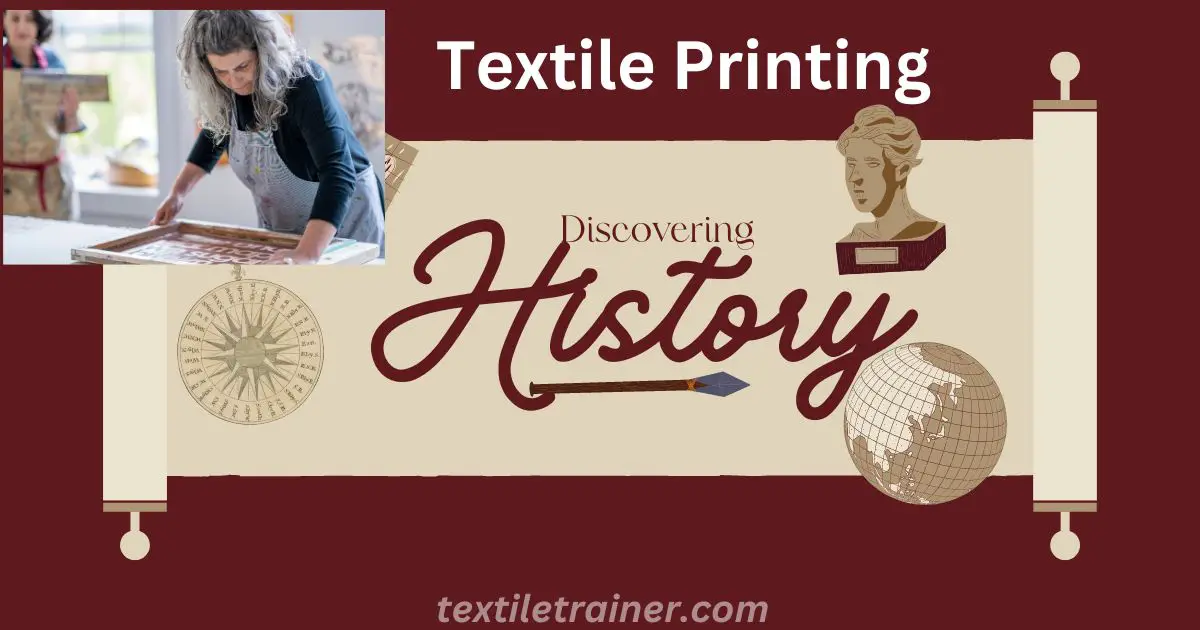Textile Printing
Textile printing is the process of applying designs or patterns onto fabric using various printing techniques. This is an important aspect of the textile industry, as it allows for customization and personalization of fabrics, making them more appealing to consumers.
There are several methods of textile printing, including screen printing, digital printing, and block printing, among others. Screen printing involves using a stencil or screen to apply ink onto fabric, while digital printing uses a computer-controlled printer to directly print the design onto the fabric. Block printing involves using carved wooden blocks to stamp the design onto the fabric.
Benefits of textile printing
One of the main benefits of textile printing is the ability to create unique designs and patterns. This is especially important in the fashion industry, where designers often need to create custom prints for their collections. With textile printing, designers have the flexibility to create intricate and detailed patterns that are not possible with traditional weaving or dyeing methods.
Another benefit of textile printing is its ability to produce high-quality and long-lasting prints. With advancements in printing technology and ink formulations, modern textile prints are resistant to fading and can withstand multiple washes without losing their vibrancy or color.
Textile printing also offers a more sustainable alternative to traditional dyeing methods. With traditional dyeing methods, large amounts of water are used to dye the fabric, resulting in significant water waste and pollution. Textile printing, on the other hand, uses less water and produces less waste, making it a more environmentally friendly option.
However, textile printing also has its challenges. One of the biggest challenges is the production of accurate color matching. Different fabrics and printing techniques can affect the way colors appear on the final product, making it difficult to achieve consistent color accuracy across different batches of prints.
In addition, the printing process can also affect the texture and feel of the fabric. Thicker inks and multiple layers of printing can make the fabric feel stiff and heavy, while lighter inks and fewer layers can result in a softer feel.
History of textile printing
Textile printing has a long and rich history, dating back thousands of years to ancient civilizations. The earliest known evidence of printed fabrics dates back to the 4th century BC in India, where cotton fabrics were printed using wood blocks.
Block Printing
Block printing, also known as woodblock printing, is one of the oldest forms of textile printing. The technique involves carving a design onto a wooden block and then pressing the block onto the fabric to create the pattern. This method was widely used in Asia and Europe during the Middle Ages, and it is still used today in some parts of the world.
In India, block printing reached its peak during the Mughal era (1526-1857). Artisans would carve intricate designs onto wooden blocks, and then dip the blocks into natural dyes made from plants and minerals. They would then press the block onto the fabric, creating beautiful and intricate patterns. The designs were typically geometric or floral, and the colors were bold and bright.
Screen Printing
Screen printing, also known as silk screening, is a technique that originated in China during the Song Dynasty (960-1279 AD). The process involves using a mesh screen to transfer ink onto the fabric. The screen is made of silk, polyester, or nylon, and it has a stencil or design cut into it. The ink is applied to the screen, and a squeegee is used to force the ink through the stencil and onto the fabric.
Screen printing became popular in Europe during the 18th century, and it was used to print wallpaper, textiles, and other decorative items. In the 1900s, screen printing was used to print t-shirts, posters, and other graphic designs.
Digital Printing
Digital printing is a relatively new form of textile printing that has emerged in the last few decades. The process involves printing a digital image directly onto the fabric using a specialized printer. The printer uses inkjet technology to apply the ink onto the fabric, and the design is created on a computer using specialized software.
The first digital printers were developed in the 1990s, and they were primarily used for printing on paper. In the 2000s, digital printing technology advanced to the point where it was possible to print on textiles. Digital printing has revolutionized the textile industry by allowing for more complex and intricate designs, as well as reducing the time and cost of printing.
Advancements in Textile Printing
Advancements in technology have allowed textile printing to become more efficient, cost-effective, and sustainable. In the 19th century, the invention of the roller printing machine revolutionized the textile industry. The machine used engraved metal rollers to print designs onto the fabric, allowing for faster and more consistent printing.
In the 20th century, advancements in synthetic dyes made it possible to create more vibrant and long-lasting colors. The development of digital printing technology has also revolutionized the industry by allowing for more complex and intricate designs, as well as reducing the time and cost of printing.
Sustainability in Textile Printing
Sustainability has become a growing concern in the textile industry, and many textile printing companies are working to reduce their environmental impact. One of the main environmental concerns with textile printing is the use of water and chemicals. Traditional dyeing methods can use large amounts of water and produce hazardous chemicals that can harm the environment.
To reduce the environmental impact of textile printing, many companies are turning to eco-friendly printing methods. Digital printing, for example, uses less water and produces less waste than traditional dyeing methods. Companies are also using natural dyes made from plants and minerals, which are safer for the environment and produce beautiful and unique colors.
Conclusion:
Textile printing has a long and rich history, dating back thousands of years to ancient civilizations. The industry has undergone significant advancements over the years. Despite these challenges, textile printing remains a crucial aspect of the textile industry, offering designers and consumers the ability to create unique and personalized fabrics. With continued advancements in printing technology and ink formulations, the possibilities for textile printing are endless.







I think this is a real great article post. Great.
thanks too.
Looking forward to reading more. Great blog. Will read on…
please support us.
A round of applause for your blog article. Want more.
Keep visit our site..
Im thankful for the blog article.Much thanks again. Want more.
Keep visit our site…..
Looking forward to reading more. Great blog article.Thanks Again. Really Great.
thanks too
I am so grateful for your blog article. Fantastic.
please support us….
Im grateful for the blog post.Much thanks again. Really Great.
thanks
Appreciate you sharing, great article post. Keep writing.
keep visit our site…
Thanks again for the blog post.Thanks Again. Will read on…
please support us.
Thanks again for the blog post.Thanks Again. Cool.
thanks too.
Great blog article.Really looking forward to read more.
Enjoyed every bit of your post.Really looking forward to read more. Really Cool.
Great, thanks for sharing this article.Thanks Again. Want more.
I really enjoy the blog post.Much thanks again. Really Cool.
Thanks a lot for the blog post. Keep writing.
keep visit our site.
Very neat blog article.
thanks too…..
Wow, great blog article.
I truly appreciate this post.Really thank you! Really Great.
I truly appreciate this article.Much thanks again. Much obliged.
Major thankies for the post.Really looking forward to read more. Really Great.
Appreciate you sharing, great article. Want more.
Really appreciate you sharing this post. Fantastic.
I loved your article post.Thanks Again.
Very neat post. Much obliged.
Thanks-a-mundo for the blog.Much thanks again.
A big thank you for your blog article. Fantastic.
I truly appreciate this post. Want more.
Fantastic blog.Thanks Again. Keep writing.
A round of applause for your blog. Awesome.
Thanks for the article post. Cool.
I really enjoy the blog article.Really thank you! Want more.
Major thankies for the article post.Much thanks again. Awesome.
Really informative blog post.Thanks Again. Want more.
I really liked your post.Thanks Again. Awesome.
This is one awesome article post.Much thanks again. Cool.
Thanks a lot for the article post.
Hey, thanks for the article post.Really thank you! Want more.
Thanks-a-mundo for the blog article.Thanks Again. Awesome.
I value the blog post.Thanks Again. Really Great.
Really enjoyed this article. Fantastic.
Thanks for the blog post.Much thanks again. Keep writing.
Wow, great article.Much thanks again. Great.
Great, thanks for sharing this blog article.Much thanks again. Great.
This is one awesome blog article.Really thank you! Much obliged.
Im grateful for the blog article.Really thank you! Awesome.
This is one awesome article post.Much thanks again. Want more.
I really like and appreciate your blog.Really looking forward to read more. Want more.
Thanks again for the post.Much thanks again. Want more.
Im grateful for the article. Keep writing.
Really informative post.Thanks Again. Will read on…
Enjoyed every bit of your article. Really Great.
Great, thanks for sharing this blog.Much thanks again. Will read on…
Thank you ever so for you article post.Really looking forward to read more. Really Great.
Awesome post.Really thank you! Really Cool.
I value the blog post. Cool.
Awesome article post.Really thank you! Cool.
Very neat blog.Really looking forward to read more. Fantastic.
Fantastic blog article.Much thanks again. Really Cool.
Im obliged for the blog.Really thank you! Want more.
Very neat blog post.Thanks Again. Fantastic.
Really enjoyed this blog post. Keep writing.
I loved your blog post. Really Cool.
Very informative article post.Really looking forward to read more. Really Cool.
wow, awesome blog article. Fantastic.
Very neat article post.Thanks Again.
Very informative blog post.Thanks Again. Much obliged.
Thanks so much for the blog post.Much thanks again. Fantastic.
Great post.Really looking forward to read more. Awesome.
Awesome blog post.Thanks Again. Cool.
Enjoyed every bit of your post.Thanks Again. Keep writing.
Awesome article post.Thanks Again. Want more.
A round of applause for your blog.Much thanks again. Great.
I am so grateful for your post.Much thanks again. Keep writing.
Im grateful for the blog article.Thanks Again. Will read on…
Thanks
I really enjoy the blog article.Really looking forward to read more. Awesome.
Hey, thanks for the blog article.Much thanks again. Really Great.
Really appreciate you sharing this article.Thanks Again. Keep writing.
Thanks for the post.Much thanks again. Much obliged.
Awesome blog post.Much thanks again. Cool.
I am so grateful for your blog post.Really looking forward to read more.
Kerassentials are natural skin care products with ingredients such as vitamins and plants that help support good health and prevent the appearance of aging skin. They’re also 100% natural and safe to use. The manufacturer states that the product has no negative side effects and is safe to take on a daily basis.
Looking forward to reading more. Great article post. Want more.
Thanks a lot for the article.Really thank you! Really Great.
Great article post. Fantastic.
Really informative post.Really thank you! Will read on…
I really enjoy the article post.Really looking forward to read more. Great.
Hey, thanks for the article.Thanks Again.
Very good blog post.Really thank you! Want more.
Im grateful for the article post. Really Cool.
Im grateful for the blog article.Thanks Again. Will read on…
Im thankful for the article post.Really thank you! Will read on…